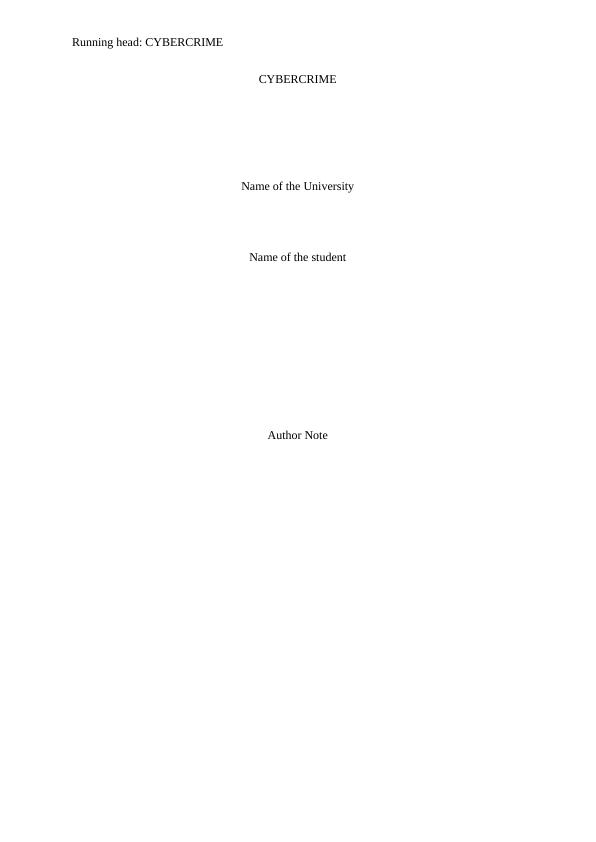Understanding Cybercrime: Types, Perpetrators, and Mitigation Strategies
Understanding the increase in computer-related security incidents, common types of computer security attacks, perpetrators of computer crime, managing security vulnerabilities, response to security incidents, computer forensics, and ethical issues in safeguarding data and information systems.
4 Pages760 Words231 Views
Added on 2023-06-14
About This Document
This article discusses the impact of cybercrime on Australia and the types of cybercrime, perpetrators, and mitigation strategies. It also highlights the Spam Act passed by the ACMA. The article is based on research articles and real-life cybercrime attacks.
Understanding Cybercrime: Types, Perpetrators, and Mitigation Strategies
Understanding the increase in computer-related security incidents, common types of computer security attacks, perpetrators of computer crime, managing security vulnerabilities, response to security incidents, computer forensics, and ethical issues in safeguarding data and information systems.
Added on 2023-06-14
ShareRelated Documents
End of preview
Want to access all the pages? Upload your documents or become a member.
Digital/Cybercrime Evolution, Detection, and Prevention
|9
|1830
|261
Cyber Security: A Review of Cyber Dependent Crimes and Techniques Used by Experts
|5
|1329
|138
Cyber Attacks: Types, Recent Incidents, Motivations, and Ransomware
|5
|1791
|347
Hackers Without Borders: A Legal Response
|11
|2715
|251
Security threats Assignment PDF
|17
|5254
|133
Networking: Malicious Attacks, Social Engineering, Information Security Risks, Network Auditing, and Risk Assessment Management
|10
|3587
|73


